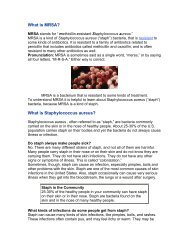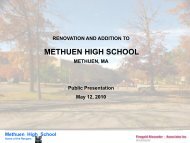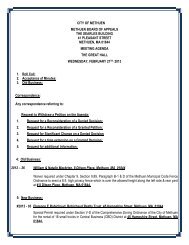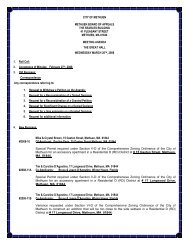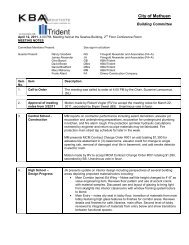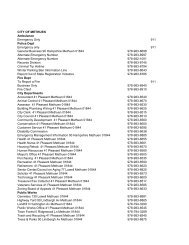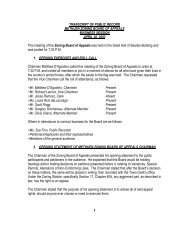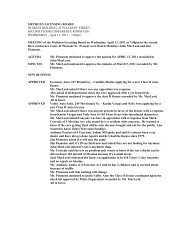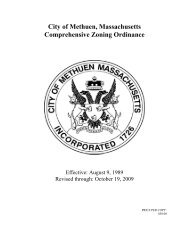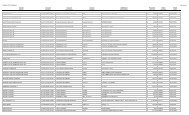City of Methuen Master Plan
City of Methuen Master Plan
City of Methuen Master Plan
Create successful ePaper yourself
Turn your PDF publications into a flip-book with our unique Google optimized e-Paper software.
Transportation and Circulation<br />
is a major point <strong>of</strong> congestion and safety concerns, and steps are being taken by the State to identify<br />
solutions there.<br />
Other factors helping make <strong>Methuen</strong> a “driving city” relate to demographic shifts over years. The<br />
number <strong>of</strong> households with two or more cars increased over 70% in the last 10 years, and three-car<br />
households are growing fast, too. More cars translate directly to more driving and less support for<br />
transit, walking, and cycling. Further, residents are driving to work more than in the past, in part<br />
because they are commuting longer distances. Fewer <strong>Methuen</strong> residents work in <strong>Methuen</strong> than did<br />
in 1990, and the number traveling to Boston daily has grown.<br />
Alternatives to driving are few. There is no coherent and useable sidewalk network and no trails or<br />
multi-use paths that could provide transportation alternatives. Transit is hard to use—buses have<br />
no presence on the street because they operate on a flag-stop basis. Using commuter rail requires<br />
most to drive and pay for parking and a one-way ticket that costs over $6.00.<br />
Comments at the visioning sessions identified problem intersections, corridors with congestion or<br />
high speeds, and safety issues. Larger issues for the longer-term <strong>Master</strong> <strong>Plan</strong>, on the other hand,<br />
focus on improving transit, sidewalks, establishing bike trails, improving the pedestrian environment<br />
through a variety <strong>of</strong> methods, and in general providing more and better ways to get around outside a<br />
car. The public also considered the role that segregating land uses has on traffic and congestion and<br />
the ability to do routine activities without using a car.<br />
TRANSPORTATION AND CIRCULATION GOALS, OBJECTIVES, AND STRATEGIES<br />
Goal T-1: Address congestion and safety issues on arterial streets to minimize traffic<br />
diverting to local streets.<br />
Objectives:<br />
• Work with the MVPC to monitor the impacts <strong>of</strong> regional traffic growth on local streets.<br />
• Work with developers and MassHighway to provide improvements on state and regional roads to minimize<br />
impacts to local streets.<br />
Strategies:<br />
T-1.1: Continue to work with EOT to develop a plan for Route 110/113 rotary improvements<br />
that can be funded and implemented and will improve local roadway conditions.<br />
T-1.2: Work with MassHighway and MVPA to design and implement signal and roadway<br />
improvements at Howe Street/Washington Street/Rte. 113<br />
T-1.3: Conduct a city-wide traffic study to identify capacity constraints, connectivity issues,<br />
deficient signals and pavement markings, pedestrian crossing problems, issues<br />
constraining transit vehicles, and impediments to cycling. Establish a Task Force to<br />
help guide the study.<br />
T-1.4: Establish a project priority list and prepare Project Need Forms for MassHighway.<br />
Page 83



